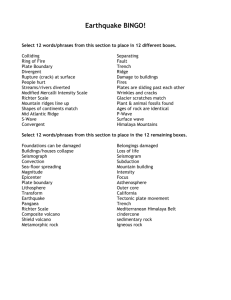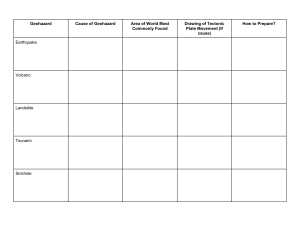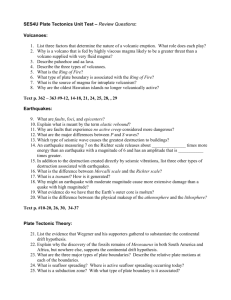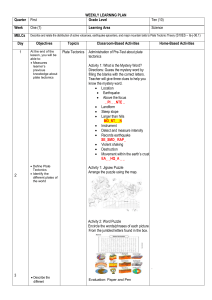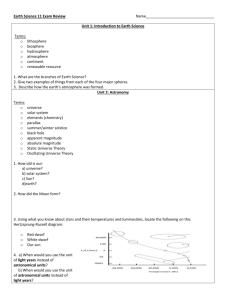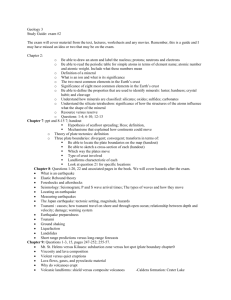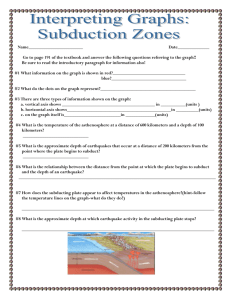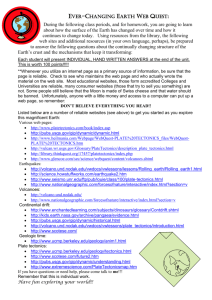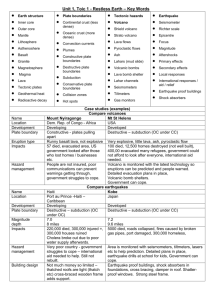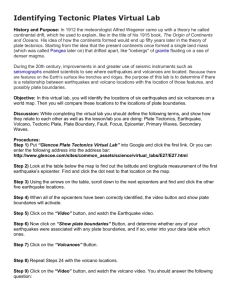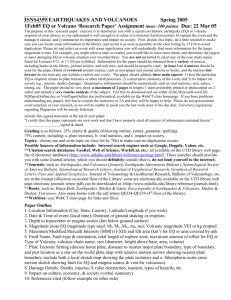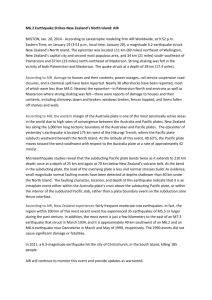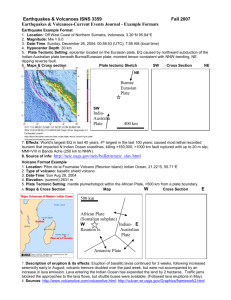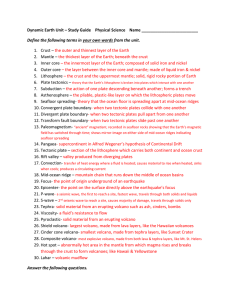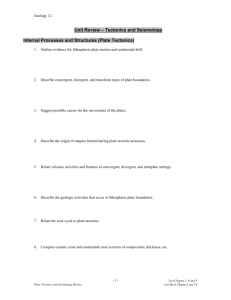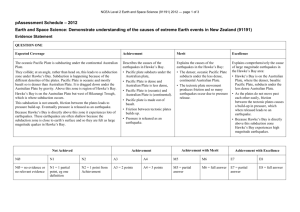PLATE TECTONICS AND EARTHQUAKE OUTCOMES
advertisement
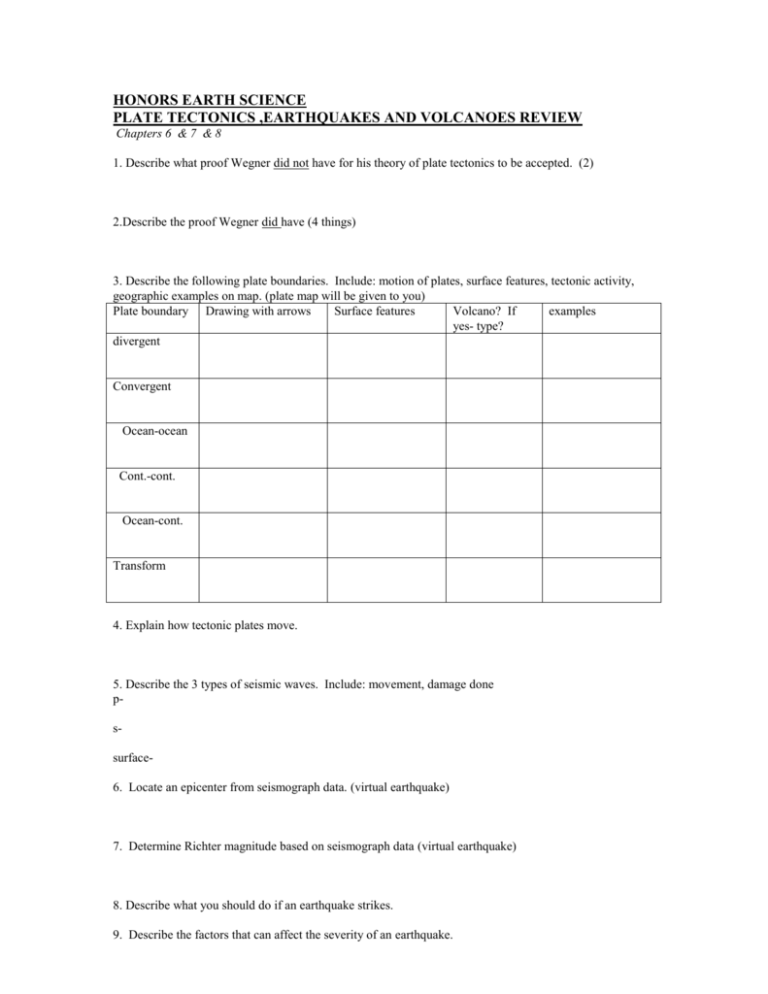
HONORS EARTH SCIENCE PLATE TECTONICS ,EARTHQUAKES AND VOLCANOES REVIEW Chapters 6 & 7 & 8 1. Describe what proof Wegner did not have for his theory of plate tectonics to be accepted. (2) 2.Describe the proof Wegner did have (4 things) 3. Describe the following plate boundaries. Include: motion of plates, surface features, tectonic activity, geographic examples on map. (plate map will be given to you) Plate boundary Drawing with arrows Surface features Volcano? If examples yes- type? divergent Convergent Ocean-ocean Cont.-cont. Ocean-cont. Transform 4. Explain how tectonic plates move. 5. Describe the 3 types of seismic waves. Include: movement, damage done pssurface6. Locate an epicenter from seismograph data. (virtual earthquake) 7. Determine Richter magnitude based on seismograph data (virtual earthquake) 8. Describe what you should do if an earthquake strikes. 9. Describe the factors that can affect the severity of an earthquake. 10. Describe the differences and usefulness of the Richter and Mercalli Scales. (if one is high and the other low what info can that tell you?) 11. Recognize the 3 types of faults from pictures. (page 267) 12. Determine the age of islands formed from a hot spot and the direction of plate movement 13. Compare runny vs. thick lava. Which has more quartz? Type of volcano? 14. Recognize the four types of volcanoes from: Composite Cinder Eruption type Shield fissure Rock type hazards shape Plate boundary 15. Identify and describe the layers of the earth. Explain how information is gained about each layer: crust- mantle- outer core inner core 16. Explain how a tsunami can form. 17. Explain how an intraplate earthquake or volcano can happen. Site some examples of each. 18. What causes liquefaction?



